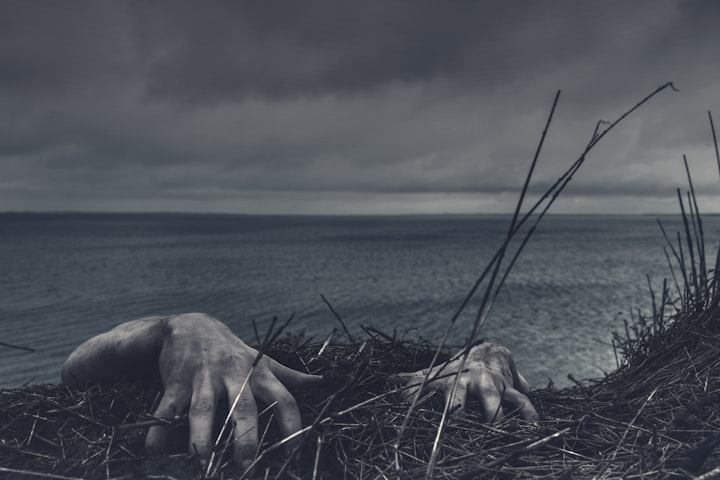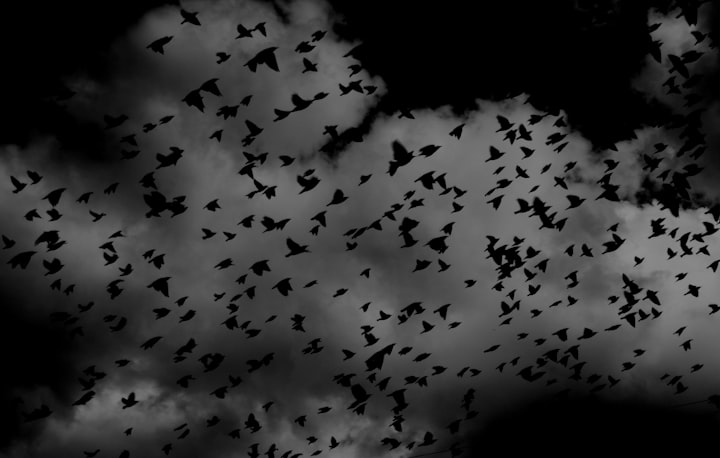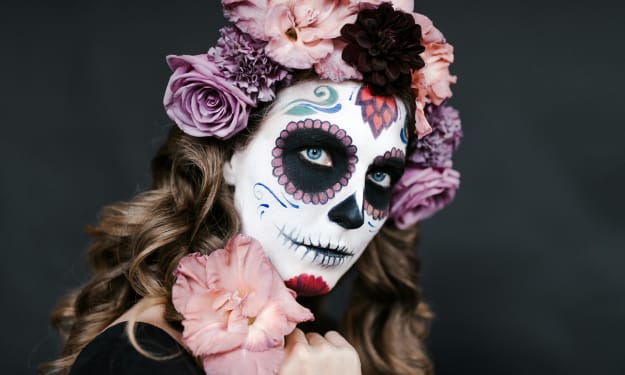Five Unique Symbols To Use In Scary Stories
Unnerving objects packed with metaphors

The power of symbolism is one of the first lessons you have in English One and Creative Writing. Symbolism is a sturdy pillar in a writer's support system and can increase the relationship between the audience and the piece. For example, most people recognize the Mockingjay Pin. Having a motif is especially important nowadays since younger generations are proven to gravitate towards logos.
If I'm honest, I usually neglect the importance of symbols in my writing until after the fact. Sometimes, I'll reread what I've done and think that kind of counts as a symbol and move on. In a genre like horror, that won't work. I have more posts centering on the horror genre for Halloween, and I'll leave those linked at the end.
To summarize, I reiterate that the horror genre has different goals than your average piece. During those posts, I said that I emphasize character development more than I used to. Now, I want to visit the other side of the process, world-building. Whether or not symbols count as whole-building depends on who you ask, but here's my take.
In my opinion, symbols are part of the setting, given that characters interact with them the way they would the environment. Let's return to the Mockingjay Pin. Characters in the Hunger Games franchise connect and engage with the motif, making it a part of the setting.
With that in mind, here are some unique symbols to use in your horror stories. If you happen to use any of these, let me know. I'd love to read about it.
- Grandfather clocks

I've seen media with grandfather clocks serving as symbols, but I still wanted to mention them here. The perception of time is eerie. The duration of a tragedy can enhance the impact it has on the plot. I've seen stories like The Last Of Us use a wristwatch to showcase this sentiment.
Grandfather clocks are a whole other ballpark. They're ornate and can be heavy, almost unmoveable. They have a distinctive chime, which I've heard during the transition from the second act to the third. Not to mention, grandfather clocks are expensive!
There are a ton of avenues you can explore with this piece of decor. An interesting take is seeing a broken clock. A broken clock could show the theme of running out of time. If the clock represents time, breaking it could introduce themes of agelessness. That could be a good or bad thing. Suspense is also a vital gear in scary stories, best drawn out by something familiar. I feel like grandfather clocks have such a specific image to them that they're bound to stick out in your setting.
- Dead grass

As a southerner, burnt grass and tree branches are something you see every summer as you drive. Seeing burnt grass in the wild? Awful. Last year, I went on a hike and came across a patch of burnt grass in a nature park, surrounded by healthy foliage.
I'm aware that this is an oddly specific image and that it's sun damage, not anything malicious. Still, I believe that there is so much potential in this sight. Especially if you're writing fantasy.
Even if you're not impressed with the sight of burnt grass, you can't deny the appeal of the bonus sensory images. For one, heat-damaged grass has a very distinctive sound and touch. Contrasted to the soft, healthy grass surrounding it. You also have options to explain why the grass is burnt in the first place. Was it someone poisoning the grass? Was it a supernatural cause? Or a random consequence?
- A broken pot.

My mind immediately jumps to a shattered flower pot or planter. Terracotta pots usually hold living plants, and a broken one suggests the loss of that ability. Like any other shard of glass, pieces of broken pots can be used by your characters as a means to defend themselves.
Unlike a vase, I think a flower pot holding a healing herb or another rooted plant carries more weight. If you're worried about the logistics of this, know that most planters break in large chunks. Of course, you have other tactile effects for this symbol.
A pot, specifically with soil and plants, will make a low hollow sound depending on where it falls (tile, carpet, concrete, etc.) Plus, the dirt adds extra drama to the scene, along with the color of the plants. As someone with potted plants, I can testify that many flies and other bugs love the soil, which adds even more symbolism to your story.
- Frothy Water

I've recently been inspired by the North-West coast of America, more specifically Maine and New Hampshire. The ocean has been used as a symbol in stories ever since stories have been around, but it's perfect for a horror piece. If you're exploring the fear of the unknown, dark, foamy water is a great backdrop.
Not to mention, the ocean can be used in virtually any genre. Fantasy, psychological thriller, survival, the list goes on. A beach town could be driving the plot or a crew of characters on a shipping boat. Regardless, tumultuous and opaque water can serve as an ominous foreshadowing device and symbol. The ocean is so unexplored that you could put anything in the water for your story.
- Windows

Natural lighting is all the rage in home design, but the consequential windows can be terrifying. My biggest fear has never been looking out. No, I wouldn't mind looking at a forest at night through a large window. My biggest fear would be someone...or something looking in. The tension can build up depending on where you place your windows. In a submarine? On the ceiling? On the second level of a home?
Maybe I'm getting a little pretentious here, but I feel like characters who constantly look through windows convey paranoia to the audience. The windows, to me at least, serve as a device to showcase a protagonist's anxiety, suspicion, and slipping sanity. This could be evident if your character routinely monitors the windows or makes it a habit to double lock them. On the other hand, a large window could communicate an avoidance, showing the character something they've ignored until they can no longer do so.
Of course, there are several ways to modify a window to change the symbolism behind it. The window could be magic, dirty, stained glass, shrouded in curtains, you get the idea.
We hit the lucky number of examples. I hope these symbols proved helpful to anyone reading. Throughout writing this, I noticed the versatility of everyday items and their meaning. It reminded me to think twice about the objects I give to my characters and how they could change the effectiveness of my storytelling. Thank you so much for taking the time to read my post. If you want to see more content like this, please like this post, share it with a friend, or subscribe. Don't forget to follow me on Instagram @erinhastoomanybooks!
About the Creator
erinhastoomanybooks2.0
Hello! Welcome to my page where I love posting about crystals, design, writing tips, and more! You can find me on Instagram @erinhastoomanybooks2.0






Comments
There are no comments for this story
Be the first to respond and start the conversation.